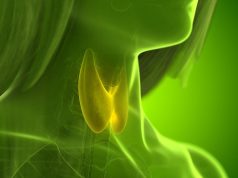Air pollution linked to increased risk for symptomatic arrhythmia onset within the first few hours of exposure
By Elana Gotkine HealthDay Reporter
MONDAY, May 1, 2023 (HealthDay News) — Exposure to air pollution is associated with onset of symptomatic arrhythmia within the first few hours of exposure, according to a study published online May 1 in CMAJ, the journal of the Canadian Medical Association.
Xiaowei Xue, from Fudan University in Shanghai, and colleagues conducted a nationwide, case-crossover study in China between 2015 and 2021 to examine the association between exposure to air pollution and onset of acute symptomatic arrhythmia. Data on hourly concentrations of six air pollutants — fine particles (PM2.5), coarse particles (PM2.5-10), nitrogen dioxide (NO2), sulfur dioxide (SO2), carbon monoxide (CO), and ozone — were included. For each of 190,115 patients with acute onset of symptomatic arrhythmia, the case period was matched to three or four control periods during the same hour, day of week, month, and year.
The researchers found air pollution to be associated with an increased risk for symptomatic arrhythmia onset within the first few hours of exposure; after 24 hours, this risk was substantially attenuated. In the first 24 hours after exposure, an interquartile range increase in PM2.5, NO2, SO2, and CO was associated with significantly higher odds of atrial fibrillation (1.7 to 3.4 percent), atrial flutter (8.1 to 11.4 percent), and supraventricular tachycardia (3.4 to 8.9 percent). Exposure to PM2.5-10 was associated with elevated odds of atrial flutter and supraventricular tachycardia (8.7 and 5.4 percent, respectively), while exposure to ozone correlated with elevated odds of supraventricular tachycardia (3.4 percent).
“Our study adds to evidence of adverse cardiovascular effects of air pollution, highlighting the importance of further reducing exposure to air pollution and of prompt protection of susceptible populations worldwide,” the authors write.
Copyright © 2023 HealthDay. All rights reserved.








